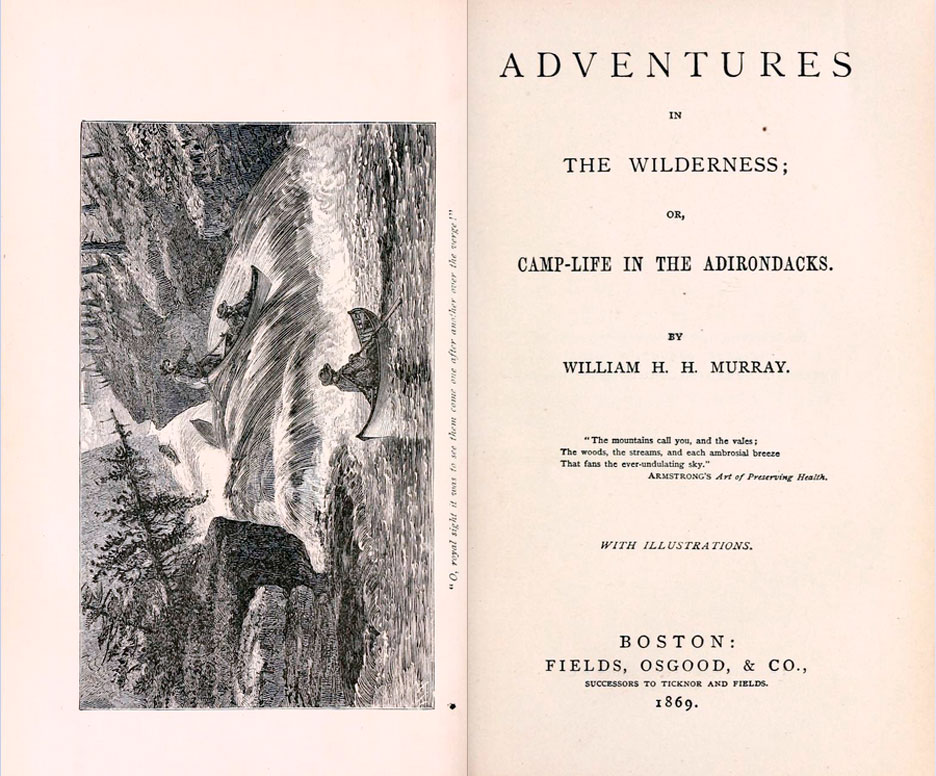Tall tales launched Adirondack tourism

There’s never a bad time to read or reread the book that first brought the Adirondacks to national attention as a recreational paradise. “Adventures in the Wilderness,” by William H.H. (“Adirondack”) Murray, attracted a figurative stampede to the Great North Woods upon its appearance in 1869.
One must understand that this was published just after the Civil War, at a time of upheaval and also a period of urbanization and industrialization. Those living and working in cities felt under considerable stress. Description of a wilderness setting not far away where one could relax and rejuvenate was welcomed.
Murray makes this akin to a modern how-to-travel book. He details routes into the mountains, lists places to stay, and gives both clothing lists and suggestions for sporting equipment. Perhaps most importantly, he tells you the importance of having an excellent guide. “A good guide, like a good wife, is indispensable.” He makes specific recommendations. And, the author adds, the Adirondack wilderness offers great experiences for women who wish to go there, too.
Then comes a series of stories telling what a visitor might expect while hunting and fishing in the region. It’s hard to believe that these could be read without appreciating a degree of exaggeration. Yet when people flocked to the mountains and streams after buying Murray’s book, they clearly expected to duplicate what he described. Many who participated in what became known as “Murray’s Rush” were disappointed, enough so that they castigated the writer in print for months.
The anglers in the tale “Nameless Creek” prove able to fill their boat with rainbow trout faster than I could fill a shopping cart at my local supermarket. Every cast resulted in a fish, many of them over two pounds. Once he threw out three flies at once and land a trifecta immediately. When’s the last time that happened to you?
“Running the Rapids” offers the exhilaration one expects from paddling through a tempest of rocks and water. But if someone read this in 1869 and figured anyone could do such a trip without any prior experience, their bad assumptions can’t be blamed on Murray.
The final two stories can be safely skipped without weakening the attraction of the book. One details a religious experience in the course of a day’s observations. The final one, though a poignant tale of a man’s devotion to his horse, has no relationship to the Adirondacks.
Instead, spend extra time pondering those who took the earlier stories so much to heart and mind that they wrote bitter letters afterward to newspapers and sporting journals criticizing Murray. Sure, it’s unfortunate that they encountered bad weather. Who hasn’t had this happen in the Adirondacks? And they expressed umbrage at his underestimation of the plague of black flies? I hate to think how much time I might waste railing against not only these, but also the mosquitoes of the North Country.
And look at the masses coming to the Adirondacks in the era of COVID. If the reports of poor preparation on the part of many are true, then little has been learned over the years. People now, as in Murray’s day, need to know a walk in the wilderness is not a mere walk in the park. We wouldn’t appreciate it so much if it was.
It’s worth trying to find the Syracuse University Press reprint of the book. Still available in paperback, this edition includes a concise history of early Adirondack tourism in its 70-page introduction by Warner Cadbury. This helps put Murray into the context of his times; it also includes Murray’s detailed written response to his critics.
In any form, however, a new look at the book that essentially launched the Adirondacks as a popular recreational area will prove enjoyable.



